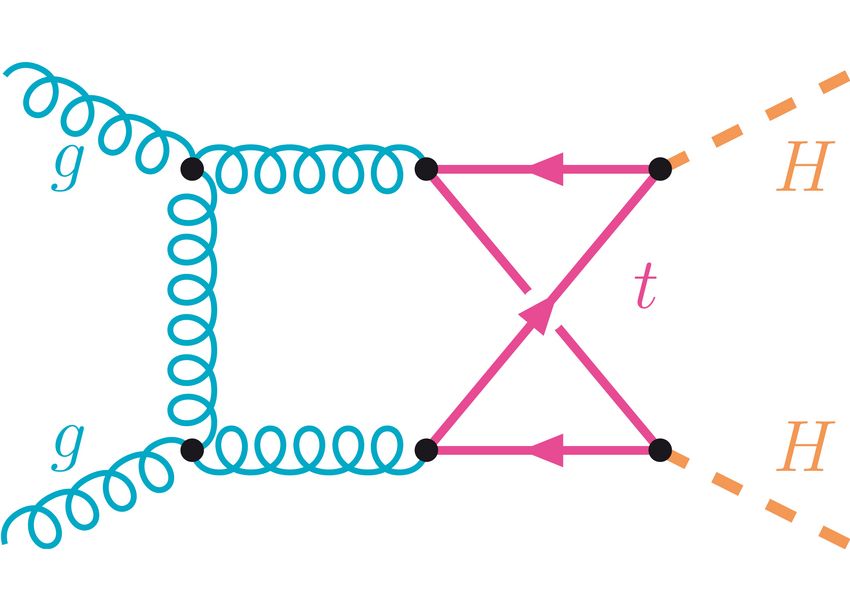The discovery of the Higgs boson in 2012 was the beginning of a new and very exciting phase in elementary particle physics. The Higgs boson plays an important role in our understanding of the fundamental interaction between the elementary particles known to date.
The so-called Higgs mechanism gives the W and Z bosons – responsible for the weak force – their mass. The fermions, i.e. leptons (electrons, for example) and the quarks also acquire mass by interacting with the Higgs. The Standard Model states that the top quark, the heaviest elementary particle known to date, similarly acquires its mass by interacting with the Higgs boson.
Is there such a thing as a Higgs-Higgs interaction?
Physicists furthermore assume that the Higgs boson also interacts with itself. It is very important to confirm this assumption experimentally, as only then will the Standard Model work as we currently consider it to do. In order to be able to measure this “self-coupling”, at least two Higgs bosons must be created in the collision experiments currently being carried out in the Large Hadron Collider (LHC).
These events, however, can be observed only rarely. Hopes therefore rest on the modernized high-luminosity version of the LHC which is to become operational sometime in or after 2025. The scientists expect that sufficient Higgs pairs will then be produced in order to learn more about the Higgs self-coupling.
Experiments thrive on exact predictions
Deviations from the theoretically predicted value here would be a spectacular indication of “new physics” – i.e. an indication that the Standard Model needs to be expanded. To find these indications, the theoretical predictions within the Standard Model must be extremely precise: well-founded conclusions can be drawn from the experimental data only when the expected value has been exactly determined.
Gudrun Heinrich, co-author of the current publication, provides a simple comparison: “If you order raspberry ice cream in an ice cream parlour and are served strawberry ice cream, you can only tell the ice cream vendor that they have made a mistake if you know precisely what raspberry ice cream tastes like.”
Exact computation instead of approximations
The Phenomenology Group at the MPP has now completed a high-precision computation that allows the Higgs pair production to be described more exactly. This required them to compute so-called 2-loop integrals, which contain massive Higgs bosons and massive top quarks in addition to massless gluons (see diagram).
The computation of these Feynman diagrams is mathematically very complex, which explains why only various approximations were known previously. With advanced numerical methods as developed by the MPP’s Phenomenology Group it has been possible to publish the most accurate computation for Higgs pair production so far.
“At this point in time we cannot foresee whether this will at some time lead to ‘new physics’,” says Gudrun Heinrich. “But we now have an excellent theoretical basis for future experimental measurements.”
The precision computing was performed at the supercomputer “Hydra” run by the Max Planck Computing & Data Facility in Garching.
Publication:
Higgs boson pair production in gluon fusion at NLO with full top-quark mass dependence; S. Borowka, N. Greiner, G. Heinrich, S.P. Jones, M. Kerner, J. Schlenk, U. Schubert, T.; Phys. Rev. Lett. 117, 012001 (2016),
https://arxiv.org/abs/1604.06447
Contact:
Dr. Gudrun Heinrich
Max Planck Institute for Physics
+49 89 32354-284
